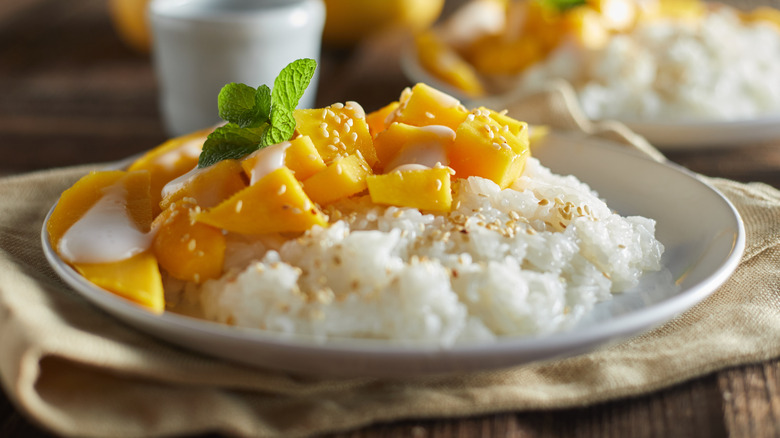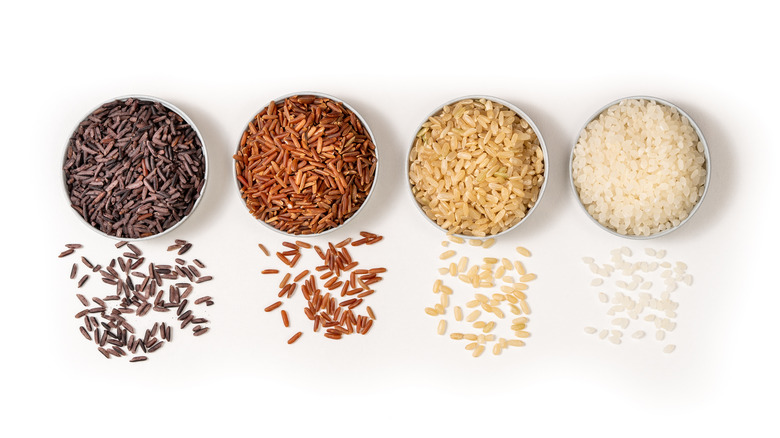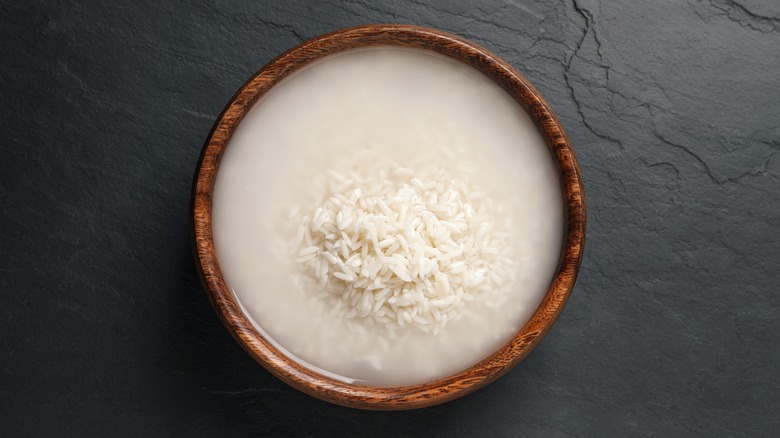The Tip You Need For Making Restaurant-Style Sticky Rice
No lavish meal at an Indian restaurant is complete without a generous serving of basmati rice, each alabaster grain perfectly distinct from the next. Those who cooked rice at home know this is no small feat — rice is a starchy grain, after all, and likes to clump together. Thankfully, some dishes require glutinous rice, like the Thai mango and sticky rice dessert Khao Niao Mamuang. This culinary application requires rice that clumps together without turning into a gummy, monolithic mass. Apart from choosing the right kind of rice, there are a couple of other cooking tips that will guarantee a sticky result, and chief among them is not over-rinsing.
We're not suggesting that you don't rinse your sticky rice at all — there's likely dust and debris on packaged grains that you don't want to ingest — but unwashed rice is also coated in a dusting of starch, and this will provide lots of assistance in the sticky department. That's exactly why the basmati rice at your favorite Indian restaurant was probably rinsed within an inch of its life.
Retaining some starch keeps rice sticky
Starch is a powder made up of bonded glucose units. A major source of dietary carbohydrates, starch is found in plenty of other foods besides rice, such as potatoes, pasta, and bread. It also happens to be hydrophilic, which means it loves water. Through a process called gelatinization, starch molecules will absorb water and expand until they burst, which is why over-cooked rice turns to porridge. However, leaving a bit of starch on the rice grains by not over-rinsing will go a long way in helping them stick together during cooking.
For this reason, you might be tempted to not rinse your sushi rice at all, which is likewise inadvisable — and not just because of cleanliness. The container of rice that ends up in your pantry has likely traveled a long way, and therefore, its grains have likely accumulated quite a starchy coating from all the jostling around. Too much starch on your rice grains will make them go from sticky to gummy, and no Thai restaurant worth its mangoes serves gummy rice. Fortunately, there's a pre-cooking corollary to rinsing sticky rice that also ensures success.
Try giving your rice a good, long soak
Restaurant-style sticky rice goes through two other processes after washing: It's soaked and steamed. You might not have a bamboo steamer basket (boiling in water or cooking in the microwave will do just fine), but if you take the time to soak your rice, it's virtually guaranteed that it will cook evenly. How much time? At least one hour or even overnight at room temperature, or as little as 10 minutes in a bowl of warm water. The soaking process is universally recommended when making sticky rice because, as you might have guessed, it allows each grain enough time to absorb the right amount of water to cook properly.
A rice cooker will handle all these intricacies on its own, once filled with rinsed sticky rice and water. If you're making your rice using the stove-top method, give your glutinous rice a decent rinse (enough to wash it clean but not so long that you chase all that good external starch away), a good soak, and then, there's nothing left to do except cook and eat.


